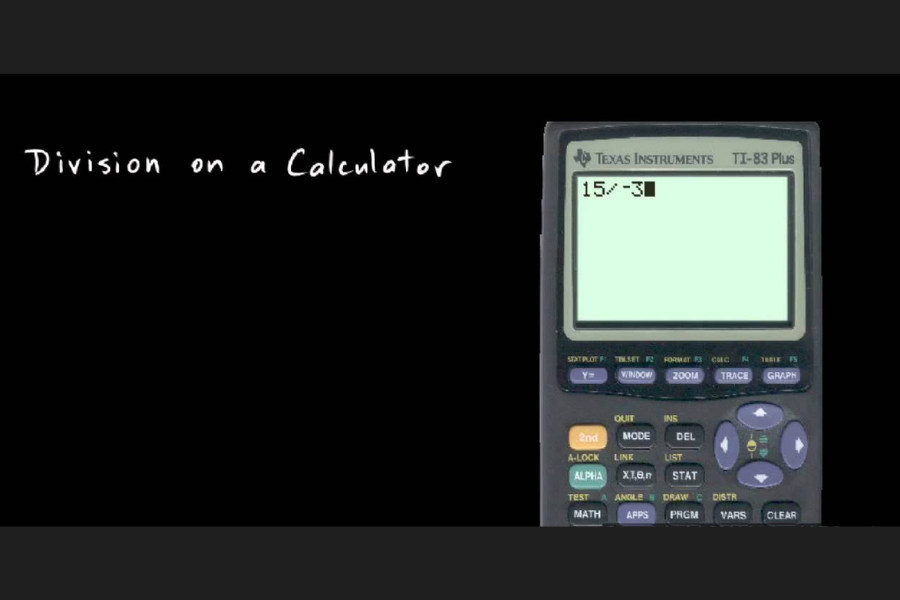Mathematical operations play a crucial role in our everyday lives, whether for managing finances or conducting scientific studies. One common operation is division, such as calculating 602.88 Divide by 150.8. This article explores this particular division, breaking down the steps involved, its significance, and potential applications of the resulting value.
Analyzing the Division of 602.88 Divide by 150.8

Dissecting the Numbers
To fully understand the division of602.88 Divide by 150.8 it’s helpful to break down the numbers involved:
- 602.88: This number is the dividend, which is the amount being divided. In practical terms, this could represent various quantities such as a total sum of money, a measurement in scientific experiments, or units of inventory in a business context. The value 602.88 is the starting point for our calculation.
- 150.8: This number functions as the divisor, which determines how many times it can be subtracted from the dividend. The divisor could represent a rate (such as dollars per unit), a portion of a whole, or a specific factor in mathematical or real-world scenarios. It’s the amount that we are dividing the dividend by.
Performing the Division
The division process involves determining how many times the divisor (150.8) can be subtracted from the dividend (602.88) before the remainder becomes less than the divisor. Here’s a step-by-step approach:
- Initial Calculation: 602.88 Divide by 150.8 using either a calculator or manual long division.
- Quotient Determination: The result of this division is approximately 4. This quotient signifies that 150.8 can be evenly distributed into 602.88 about four times.
In practical terms, this means that if you had 602.88 units of something and you wanted to distribute it into groups of 150.8 units each, you would be able to create approximately four such groups.
Mathematical Representation
The division can be expressed in mathematical notation as:
602.88150.8≈4\frac{602.88}{150.8} \approx 4150.8602.88≈4
This expression shows that when 602.88 is divided by 150.8, the quotient is approximately 4. This quotient indicates that the divisor fits into the dividend roughly four times. There might be a small remainder or fraction, but the quotient provides a good approximation of the division outcome.
Applications and Significance
Understanding this division is crucial in various fields:
- Finance: It can help in budgeting and financial planning by determining how many times a specific expense can be covered by a total amount.
- Science: Accurate measurements and calculations are vital in experiments, where dividing quantities helps in determining proportions and concentrations.
- Business: In inventory management, dividing total stock by the number of units per group helps in stock organization and planning.
Significance of the Calculation

Practical Applications of Division: Examining the Case of 602.88 Divided by 150.8
Applications in Various Fields
The division of numbers like 602.88 Divide by 150.8 plays a critical role in a range of disciplines:
- Finance:
- Cost Analysis: In finance, dividing a total amount by a unit cost, such as 602.88 divided by 150.8, helps determine the cost per unit. This is useful for budgeting and financial planning, allowing businesses to allocate funds appropriately or set pricing strategies.
- Resource Allocation: This type of calculation can assist in distributing resources effectively, such as determining how many units of a product can be purchased with a given budget or how to divide investment capital among different projects.
- Science and Engineering:
- Measurement Conversions: Accurate division is crucial for converting units of measurement. For example, if a scientist needs to convert a total measurement into smaller units, dividing by a specific factor, like 150.8, ensures precise conversion.
- Rate Calculations: Engineers and scientists often need to calculate rates or ratios. For instance, dividing total output by total input helps determine efficiency or productivity rates in various processes.
- Everyday Life:
- Cooking and Recipes: In the kitchen, division helps adjust recipes. If a recipe is meant for a different number of servings, dividing the total ingredient amounts by the number of servings ensures the correct proportions for your needs.
- Shopping: When buying in bulk, calculating the cost per item by dividing the total cost by the quantity helps in comparing prices and making informed purchasing decisions.
- Time Management: Efficiently managing time can involve dividing a set amount of time across various tasks. This ensures that each task receives the appropriate amount of attention.
Importance of Accuracy and Precision
Precision in division calculations is essential across all contexts:
- Financial Accuracy: In financial scenarios, precision affects the reliability of budgets and financial reports. Minor errors due to rounding or incorrect calculations can lead to significant financial discrepancies, impacting overall financial health and decision-making. Ensuring accuracy helps in maintaining clear and reliable financial records.
- Scientific and Engineering Precision: For scientific experiments and engineering projects, accurate calculations are crucial for valid results. Even small inaccuracies can lead to incorrect conclusions or inefficiencies, affecting the outcome of research or projects.
- Everyday Precision: In daily activities, precision helps avoid errors and ensures effective resource management. Whether adjusting a recipe or managing a budget, accurate calculations ensure that the intended outcomes are achieved.
Understanding Remainders in Division
Decoding the Remainder

When 602.88 Divide by 150.8, the quotient is not a whole number, indicating that there is a remainder. This remainder provides additional insight into the division process and can be expressed in various forms:
- Decimal Representation: The exact result of 602.88 Divide by 150.8 is approximately 3.9981. This decimal indicates that 150.8 fits into 602.88 nearly four times. The decimal part, 0.9981, represents the fraction of the divisor that remains after fitting 150.8 into the dividend as many times as possible. This helps in understanding that while the quotient is nearly four, there’s a small additional amount left.
- Fractional Representation: To express the remainder as a fraction, consider the decimal portion 0.9981. Converting this decimal into a fraction of the divisor, you get a remainder that can be expressed as a fraction of 150.8. This approach visually demonstrates how much of the divisor’s value remains after the division. It provides a tangible way to understand the leftover quantity in relation to the original divisor.
- Percentage Representation: The remainder can also be represented as a percentage of the divisor. In this case, multiplying the decimal remainder (0.9981) by 100 yields approximately 99.81%. This percentage indicates how close the remainder is to making up a full divisor.
Practical Implications of Remainders
Understanding the remainder in division is important across various practical scenarios:
- Inventory Management: In inventory systems, knowing the exact remainder helps in precise stock management. For instance, if a company is dividing its total stock into groups of 150.8 units, understanding the remainder assists in planning how many complete groups can be formed and how much stock remains. This information is critical for ordering additional supplies and preventing shortages.
- Financial Planning: In financial contexts, precise division and understanding of remainders are crucial for accurate budgeting and expense tracking. For example, when dividing a total budget among different categories, knowing the remainder helps in reallocating funds or addressing any discrepancies. This ensures that financial resources are managed efficiently and adjustments can be made as needed.
- Daily Life: In everyday situations, such as splitting a bill among friends or dividing resources for a project, knowing the remainder ensures fairness and accuracy. For instance, if a bill of 602.88 needs to be split among four people, understanding that the exact share is slightly less than 150.8 helps in making precise adjustments to ensure everyone pays their fair share.
- Educational Settings: For students and educators, understanding how to work with remainders is fundamental for mastering division and its applications. It provides a practical context for learning about fractions, decimals, and percentages, which are essential in various mathematical and real-world scenarios.
Mathematical and Conceptual Insights
Exploring Ratio, Proportion, and Dimensional Analysis with 602.88 Divided by 150.8
Ratio and Proportion
When examining the 602.88 Divide by 150.8, it’s insightful to consider the concepts of ratio and proportion to better understand the relationship between these numbers:
- Ratio: The division result, approximately 4, can be expressed as a ratio of 4:1. This indicates that 602.88 is four times larger than 150.8. Ratios provide a way to compare the relative sizes of quantities, illustrating how many times one number fits into another.
- Proportion: Proportions are essential in various fields such as engineering, design, and architecture, where maintaining correct proportions is crucial for functionality and aesthetics. Understanding the ratio of 4:1 helps in ensuring that dimensions or quantities are scaled appropriately. For instance, in design, proportions must be balanced to achieve visual harmony, while in engineering, proportions can impact structural stability.
Dimensional Analysis

In scientific and engineering contexts, dimensional analysis ensures that calculations are dimensionally consistent and meaningful:
- Compatibility of Units: When performing division involving measurements, such as 602.88 divided by 150.8, it’s important that the units of the two quantities are compatible. Dimensional analysis verifies that the units are aligned, which ensures that the result of the division is valid and interpretable. For example, if 602.88 and 150.8 are both in meters, the quotient will be a dimensionless ratio, providing a meaningful comparison of their sizes.
- Application in Scientific Calculations: Dimensional analysis is used to check the correctness of equations and conversions in scientific experiments. Ensuring that units cancel out appropriately or that measurements are consistent is crucial for accurate results. This process helps in verifying that calculations are logically sound and that the results make sense within the context of the problem.
Advanced Applications and Considerations
Statistical Analysis and Optimization with 602.88 Divided by 150.8
Statistical Analysis
In statistics, division is a fundamental operation used to derive various essential metrics, which play a significant role in data analysis and interpretation. Here’s how 602.88 Divide by 150.8 can be understood in a statistical context:
- Averages and Rates:
- Average Calculation: When dividing a total value by a number of units or observations, the result is the average or mean. If 602.88 represents the total amount of a variable (e.g., total sales, total time, or total measurements) and 150.8 represents the number of units or time periods, then the quotient (approximately 3.9981) indicates the average value per unit or per period. For example, if 602.88 is the total sales revenue over 150.8 transactions, the average revenue per transaction would be around 3.9981.
- Rate Determination: The division result can also represent a rate. For instance, if 602.88 denotes the total distance traveled and 150.8 represents the total time, then dividing these values gives the average speed. This quotient helps in understanding the rate of change or performance metric in various fields.
- Probabilities and Ratios:
- Probability Assessment: In probability theory, division helps determine the likelihood of events. For instance, if 602.88 is the number of successful outcomes and 150.8 is the number of trials, the quotient gives the probability of success in each trial.
- Ratios: Ratios express the relationship between two quantities. 602.88 Divide by 150.8, the result of approximately 4 can be used to compare different groups or phenomena. For example, in a survey, this ratio might compare the responses of two different groups, providing insights into the relative proportions or preferences.
Optimization and Efficiency

Division is also crucial in fields such as operations research and economics, where it supports optimizing processes and enhancing efficiency:
- Resource Allocation:
- Budget Distribution: Accurate division helps in equitable distribution of resources. If a total budget of 602.88 needs to be divided among various departments or projects, dividing this amount by the number of entities (150.8 in this case) provides a fair allocation per department or project. This ensures that resources are distributed in a balanced manner according to the needs or priorities of each unit.
- Inventory Management: For managing inventory, dividing total stock by the number of storage units or product categories helps in organizing inventory efficiently. This ensures that each category or storage unit receives an appropriate quantity of products, optimising inventory levels and minimising shortages or surpluses.
- Efficiency Improvement:
- Productivity Analysis: In operations research, division is used to assess productivity. For example, dividing total output (602.88 units) by total input (150.8 hours) provides the productivity rate. This helps in evaluating how efficiently resources are being used and identifying areas for improvement.
- Cost Efficiency: Dividing total costs by production units helps in determining cost efficiency. By understanding the cost per unit, organisations can identify cost-saving opportunities and make adjustments to improve profitability.
- Decision-Making:
- Strategic Planning: Accurate division supports strategic planning by providing clear insights into performance metrics and resource needs. Whether it’s in financial planning, project management, or operational adjustments, precise division helps in making informed decisions that align with organizational goals.
- Performance Metrics: By analyzing division results, organizations can set performance benchmarks and track progress. Understanding how numbers compare and what the remainders signify can help in refining strategies and improving overall performance.
FAQS
Q: What does 602.88 Divide by 150.8 mean?
A: Dividing 602.88 Divide by 150.8 calculates how many times 150.8 fits into 602.88. The result is approximately 4, indicating that 150.8 can be distributed into 602.88 about four times.
Q: How do you perform the division of 602.88 Divide by 150.8?
A: To divide 602.88 Divide by 150.8, you can use a calculator or perform manual long division. The quotient is about 4, meaning 150.8 fits into 602.88 approximately four times.
Q: What is the significance of the quotient 4 in this division?
A: The quotient of 4 means that the divisor, 150.8, fits into the dividend, 602.88, roughly four times. This is useful in practical applications like budgeting, inventory management, or determining rates.
Q: What does the remainder indicate in this calculation?
A: Since 602.88 divided by 150.8 is not a whole number, there is a remainder. The decimal result is approximately 3.9981, showing that there’s a small fraction of 150.8 remaining after forming four full groups.
Q: How is this division applied in real life?
A: In finance, it helps determine cost per unit or resource allocation. In science and engineering, it aids in accurate measurements and rate calculations. In everyday life, it’s useful for adjusting recipes, managing budgets, and comparing prices.
Q: Why is precision important in such calculations?
A: Precision ensures that results are accurate, which is crucial for reliable financial records, scientific experiments, and effective resource management. Small errors can lead to significant discrepancies, so accurate calculations are essential.
Conclusion
Understanding the division of 602.88 Divide by 150.8 offers valuable insights into how mathematical operations impact various fields. The quotient of approximately 4 demonstrates that 150.8 can be evenly distributed into 602.88 about four times, with a small remainder. This calculation is not only crucial for accurate financial planning and scientific measurements but also plays a role in everyday decisions like budgeting and recipe adjustments. Precision in such calculations is essential to ensure reliable outcomes and effective resource management. By grasping the significance of these mathematical processes, one can make informed decisions and optimise various aspects of daily and professional life.
Read Next: Hints



